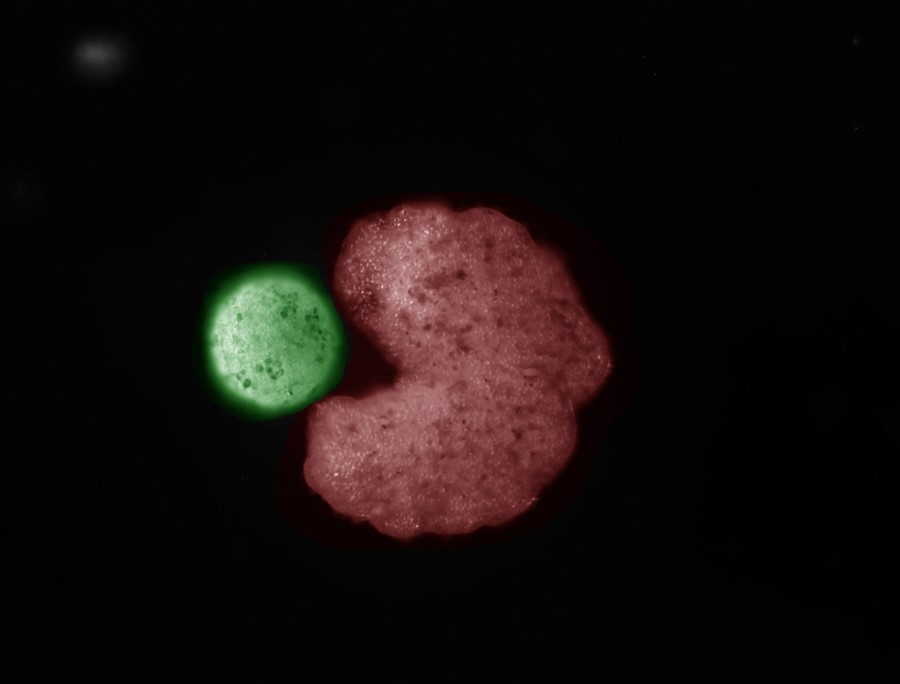We speak to the scientist behind the baby Xenobot-making machines, to find out whether his research signals the end of the human race
Another day, another terrifying development in the ‘robots taking over the planet’ timeline, as scientists have managed to develop “living robots” that are capable of reproduction.
Known as Xenobots, the organisms use a new form of self-replication, according to new research in the Proceedings of the National Academy of Sciences journal. The authors of the study discovered that the “machines” are capable of gathering hundreds of single cells, and assemble them into “baby” Xenobots. The offspring then evolve – after only a few days – to look and behave just like their parents.
“People have thought for quite a long time that we’ve worked out all the ways that life can reproduce or replicate,” said study co-author Douglas Blackiston, the senior scientist at Tufts University. “But this is something that’s never been observed before.”
Below, Dazed asks Blackiston some very important questions regarding his discovery (like, do the robots fancy each other?), and finds out just how worried we should be.
In what sense are these robots “living”, and in what sense are they “machines”?
Douglas Blackiston: As far as being a robot: the first use of the word was from a Czech play by Karel Čapek 100 years ago, where he described the ‘robots’ as being built out of organic matter. It turns out that engineering with synthetic materials like steel, wood, springs, etc, advanced much more quickly than engineering with biology, so robotics turned to inorganic systems. However, in the past 10 years, we’ve started to see bio-hybrid robots, which combine living tissues with traditional non-living materials. Much like those systems, we design our systems for a human purpose and make use of computer simulation – a traditional robotics approach. Whether or not they are truly ‘living robots’ is certainly up for debate – I find roboticists are comfortable with this categorisation, while biologists are skeptical.
What we build in the lab is definitely living, because it’s made from cells. We collect the cells from amphibian embryos, which are then used as the building blocks for our designs. Some we build from the ground up, much like Lego or Minecraft, incorporating muscle tissue at specific locations to allow the design to ‘walk’. For others, we use small balls of developing skin, called an animal cap, which are known to form small hairs on their surface. These hairs normally beat to move slime across the tadpole’s skin and keep pathogens away, but because the animal caps are small, the hairs generate enough force to propel the design through the water.
How do they reproduce, exactly?
Douglas Blackiston: The word reproduce has a lot of biological qualifiers, so in the report we use the more general ‘replicate’. We provide a field of loose amphibian cells, then add a number of our moving designs. As they move, the cells are first pushed into small piles, then into large piles. Because the cells stick to each other, the piles form stable spheres, and over the course of a few days develop into a second generation of motile forms.
Do the robots have sexual preferences?
Douglas Blackiston: An interesting aspect of this kind of replication, compared to what we see on earth, is that nothing is passed from one generation to the next. There’s no preference of any kind because the system is ‘blind’ to what it’s doing – the motile forms simply move around in predictable ways (without input from their environment), and piling happens naturally.
Where does AI come into the equation?
Douglas Blackiston: It turns out spheres are not very efficient at making piles or pushing small objects. So we asked the AI to simulate many thousands of possible shapes, and provide us with one that makes piles faster or of a larger size. It turns out a ‘C’ shape works really well. In hindsight this seems intuitive – snow plows are quite efficient at pushing and piling up loose snow, much like our ‘C’ shapes are efficient at pushing and piling up loose cells.
“There’s no need to worry. Unless you have loose frog stem cells floating around your waterway in very high concentrations, you would never see this happen outside the petri dish” – Douglas Blackiston
Should we be worried about them taking over the world?
Douglas Blackiston: There’s no need to worry. Unless you have loose frog stem cells floating around your waterway in very high concentrations, you would never see this happen outside the petri dish. In fact, when frogs shed their skin, there’s often some living cells that come off, and we don’t see them going on to pose a risk. In addition, from a practical standpoint, any studies using living cells are subject to institutional, state, and federal oversight. We must give approval before we begin our work, and comply with rules safeguarding the use and disposal of biological tissue.
What real-world applications will these findings lead to, and what’s the next step for you in this line of research?
Douglas Blackiston: Building and designing biological systems is really exciting. If you could design an ‘organism’ from the ground up, like a robot with a programmed behaviour, what would you have it do? There are many places where traditional robots have problems, like inside the human body. So you could imagine building a microscopic design from human cells, which could sense tissue damage and release compounds to help with healing. Alternatively, you could design a living biosensor, which you release in a waterway and it records information about pollution as it moves downstream. These applications are still a way off but are the types of things we frequently discuss with the team.




